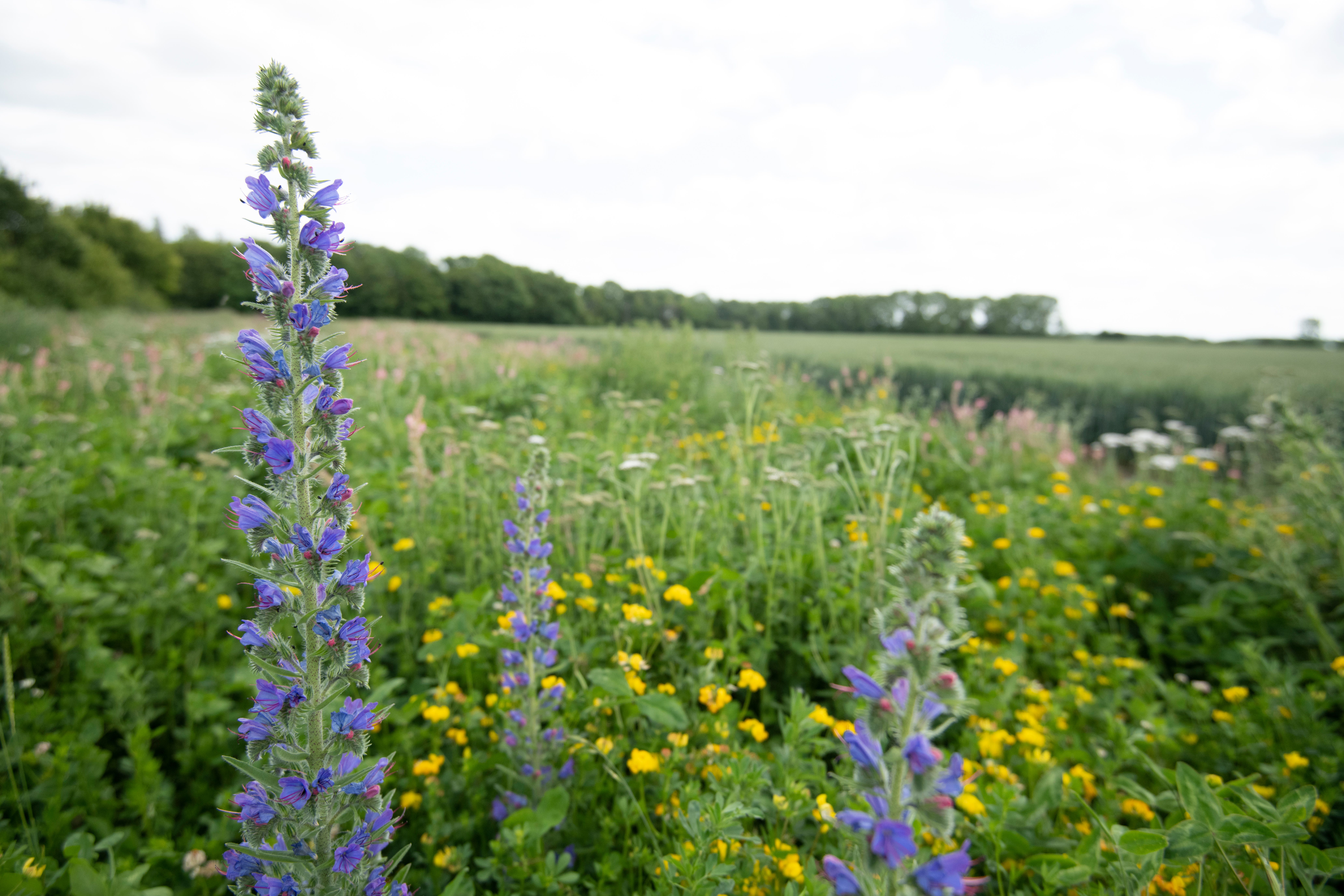Bird populations boosted when 10% of farmland devoted to nature measures – study
Research led by the RSPB estimates that a third of the farmed landscape needs to be in agri-environmental schemes to boost bird numbers.

Bird populations increase on farms which devote around a tenth of their land to nature-friendly measures such as wild field margins, a study shows.
The research led by the RSPB also estimates less than a third of the lowland farmed landscape needs to be in these kind of “higher-level” nature-friendly farming schemes to boost farmland bird populations by 10% in a decade.
The researchers are calling for a more strategic approach to implementing agri-environment schemes, paid for by the taxpayer, with more emphasis on the higher-level schemes, in order to help declining bird species recover.
The researchers also said targeting such schemes to farmland that already holds the highest number of priority bird species can reduce the overall amount of the landscape that needs to be managed in this way, making it a more efficient use of spending.
The study looked at the impact of different levels of agri-environment schemes on farmland bird populations in arable, pastoral and mixed farming landscapes.
Farmland birds have declined by more than half since 1970, with steep declines in the late 1970s and 1980s due to rapid changes in farmland management, and slower falls in population since then.
Some species such as starlings and skylarks have seen dramatic declines in populations.
The Government has recently introduced a legally binding target to halt declines in species abundance in England by 2030, and new environmental land management schemes are being developed to replace old EU farming subsidies.
The 10-year study looked at the abundance of farmland birds on land managed on existing lower and higher level agri-environment schemes, as well as land with no bird-friendly initiatives on it.
Farmers in the environmental schemes used measures such as sowing margins of fields or leaving stubbles to provide overwinter food for birds, flower-rich margins to provide insects for chicks to feed on and leaving uncultivated plots for ground-nesting species within fields.
Agri-environment schemes can only recover farmland birds if sufficient bird-friendly habitat is provided at both the farm and landscape scales
Under the higher tier farming scheme an average of 11% of the farm was devoted to these kind of measures, while less than 4% was managed in this way under the lower tier scheme.
The study showed that when around 10% of the farm was devoted to bird-friendly farming practices, this benefited populations of more than half of the farmland bird species in two of three study regions.
Lower tier schemes did not generally boost numbers but did help to sustain populations of some species, while birds continued to decline in the absence of any wildlife-friendly farming measures, the researchers found.
The study also looked at how much of the wider farmed landscape in the regions it looked at needed to be in the higher level schemes.
It estimates 31% of arable East Anglia and 26% of the pastoral West Midlands needed to be in higher-tier agreements in order to increase bird populations by 10% over 10 years.
With farmers in those agreements devoting around 10% of their land to the nature-supporting measures, that would equate to bird-friendly provision taking up 3.1% of the whole arable landscape and 2.6% of grazing landscapes.
But if the use of higher-level agri-environmental schemes was targeted to where there were already higher numbers of farmland birds, the proportion of the landscape that needed to be covered by the schemes was reduced to 21% in arable areas and 17% in pastoral areas.
The study also said some species, such as the turtle dove, which is red-listed over conservation concerns about its survival, need specialist support and are not helped by general bird-friendly measures.
RSPB conservation scientist and lead author of the study Dr Rob Hawkes said: “This is the first study to ask the question – how much nature-friendly farming is needed in the English landscape to recover our depleted farmland bird populations?
“Agri-environment schemes can only recover farmland birds if sufficient bird-friendly habitat is provided at both the farm and landscape scales.
“There needs to be better, more strategic, thinking when agreeing these nature-friendly packages.”
Alice Groom, RSPB senior policy officer, said: “This research has landed as governments from the four UK countries develop new agricultural policies to replace the EU’s Common Agricultural Policy.
“This provides a critical opportunity to design future agri-environment schemes that are effective and deployed at a sufficient scale to recover farmland wildlife.”
The study was published in the Journal of Applied Ecology, with support from the British Trust for Ornithology (BTO) and funding from government conservation agency Natural England.
Subscribe to Independent Premium to bookmark this article
Want to bookmark your favourite articles and stories to read or reference later? Start your Independent Premium subscription today.
